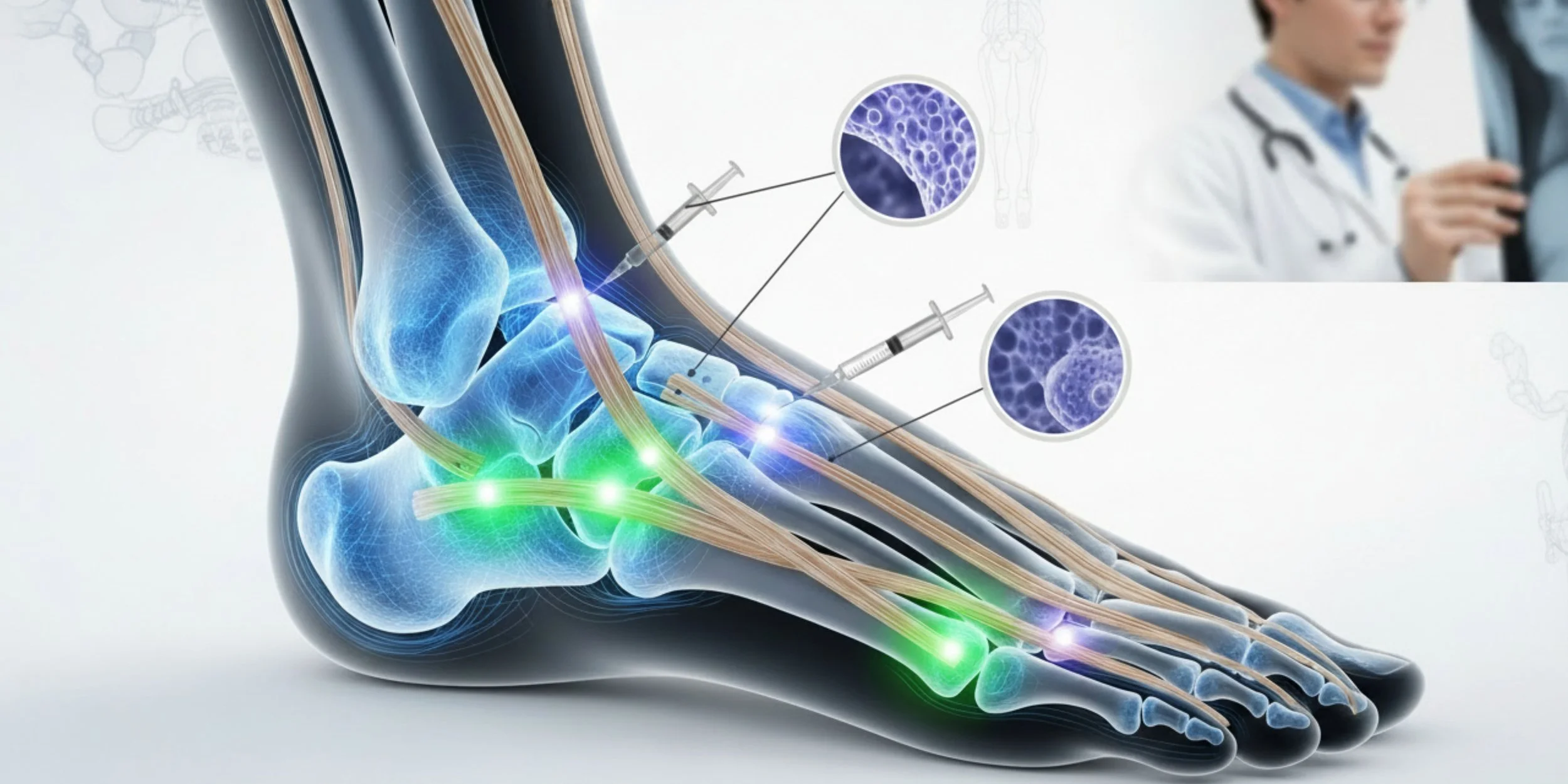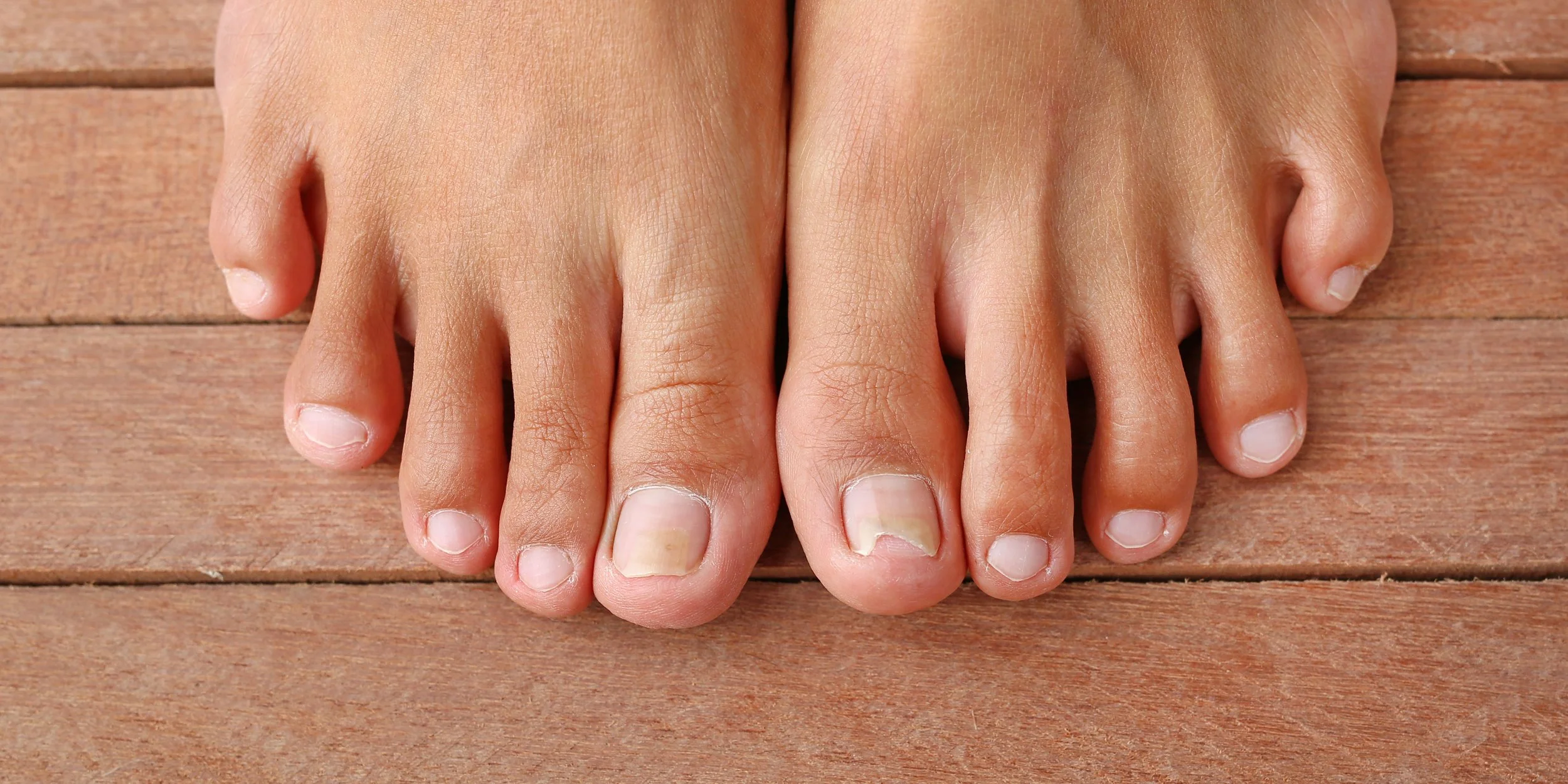Why Toenail Fungus Happens — And How to Prevent It
Toenail fungus might seem like a small problem at first—a yellow spot here, a bit of thickening there—but left untreated, it can become stubborn, unsightly, and even painful. In fact, it’s one of the most common nail conditions podiatrists treat, affecting millions of people every year.
At Pacific Point Podiatry, we see firsthand how toenail fungus can impact more than just your nails—it can affect your comfort, confidence, and even your overall foot health. The good news? With the right knowledge and care, toenail fungus is both treatable and preventable.
Here’s a clear look at why toenail fungus happens, the factors that make it more likely, and the practical steps you can take to keep your toenails healthy and fungus-free.
Understanding Toenail Fungus: An Overview
Toenail fungus, also known as onychomycosis, is a fungal infection that can affect the nail plate, nail bed, or both. It’s most often caused by dermatophytes—a group of fungi that thrive in warm, moist environments. Yeast and non-dermatophyte molds can also be responsible.
The infection usually begins when microscopic fungal spores enter through tiny cracks in your nail or the surrounding skin. It often starts at the tip or sides of the nail and slowly works its way inward. Over time, the nail may:
Change color (yellow, brown, or white)
Thicken or become brittle
Develop a distorted shape
Lift away from the nail bed
Become painful when pressure is applied
Fungal infections are notoriously stubborn because toenails grow slowly and have a hard, protective surface that makes it difficult for treatments to penetrate.
Common Causes of Toenail Fungus
Toenail fungus doesn’t appear out of nowhere—there’s almost always a pathway for the infection to enter. The most common causes we see at Pacific Point Podiatry include:
Walking barefoot in public areas
Locker rooms, public showers, pool decks, and gym floors are prime breeding grounds for fungi.Warm, sweaty shoes
Shoes that trap heat and moisture create the perfect conditions for fungus to grow.Shared nail tools
Using unsterilized clippers, nail files, or salon tools can spread fungal infections.Untreated athlete’s foot
Athlete’s foot (a fungal skin infection) can spread from the skin to the nails.Nail injuries
Trauma to the nail can cause tiny openings where fungus can enter.
Risk Factors for Developing Toenail Fungus
Anyone can get toenail fungus, but certain factors make it more likely:
Age – As we get older, nails grow more slowly and circulation decreases.
Diabetes – Higher risk due to reduced blood flow and immune function.
Weakened immune system – Certain medical conditions or medications can lower resistance.
Poor foot hygiene – Not drying feet thoroughly or wearing damp socks for long periods.
Family history – Genetics can play a role in susceptibility.
Symptoms of Toenail Fungus
Early detection is important because the sooner toenail fungus is treated, the better the outcome. Watch for these signs:
Yellow, white, or brown spots or streaks on the nail
Thick, brittle, or crumbling nails
Distorted nail shape
Separation of the nail from the nail bed
Pain or discomfort, especially in shoes
Foul odor from the affected nail
How Toenail Fungus is Diagnosed
At Pacific Point Podiatry, we start with a thorough physical examination of the nail. If needed, we may take a nail clipping or scraping for lab testing to confirm the diagnosis and identify the exact type of fungus. This step is important because different fungi respond to different treatments.
Treatment Options for Toenail Fungus
Toenail fungus can be stubborn, but effective treatments are available. We tailor recommendations to your health history, infection severity, and personal preferences.
1. Topical Treatments
Antifungal nail creams, gels, or medicated nail polish
Best for mild or early-stage infections
Requires consistent use for several months
2. Oral Antifungal Medications
Prescription pills such as terbinafine or itraconazole
Often used for moderate to severe infections
Requires monitoring for possible side effects
3. Laser Therapy
Non-invasive treatment that targets fungus under the nail with concentrated light
No downtime and minimal discomfort
Popular for patients seeking faster results without oral medication side effects
4. Debridement
Thinning and trimming thickened nails to relieve discomfort and help treatments penetrate better
5. Nail Removal
In rare, severe cases, the nail may be removed to allow direct treatment to the nail bed
Effective Prevention Strategies
Preventing toenail fungus is far easier than treating it. We recommend:
Keep feet clean and dry
Change socks daily (more often if they become sweaty)
Wear breathable shoes made from natural or mesh materials
Use antifungal powder or spray in shoes
Avoid walking barefoot in public wet areas
Disinfect nail clippers before and after each use
Choose salons that properly sterilize their equipment
Lifestyle Changes to Reduce Risk
Your daily habits make a big difference:
Rotate shoes so they have time to dry
Trim nails straight across and avoid cutting too short
Moisturize feet but keep the area between toes dry
Manage chronic health conditions like diabetes to improve circulation and immunity
Support immune health through a balanced diet, adequate sleep, and regular physical activity
When to See a Doctor
You should schedule an appointment at Pacific Point Podiatry if:
Nail discoloration or thickening is spreading
You have diabetes or poor circulation
You’re experiencing pain or swelling
Over-the-counter treatments haven’t worked after several months
The infection is affecting your confidence or daily comfort
With our Direct Specialty Care model, you can skip insurance delays and get personalized treatment quickly—often with same- or next-day appointments.
Conclusion: Maintaining Healthy Toenails
Toenail fungus may be common, but it’s not something you have to live with. By understanding the causes, knowing your risk factors, and following prevention strategies, you can protect your toenails for the long term.
If you suspect you have toenail fungus, early treatment is key. At Pacific Point Podiatry, we offer advanced solutions—from laser therapy to customized care plans—so you can get back to healthy, comfortable, and confident feet.
Your feet carry you through life—let’s keep them fungus-free.
Think you might have toenail fungus?
Don’t wait for it to get worse — early treatment is faster, easier, and more effective.
Book your appointment with Pacific Point Podiatry today and take the first step toward healthy, fungus-free feet.











